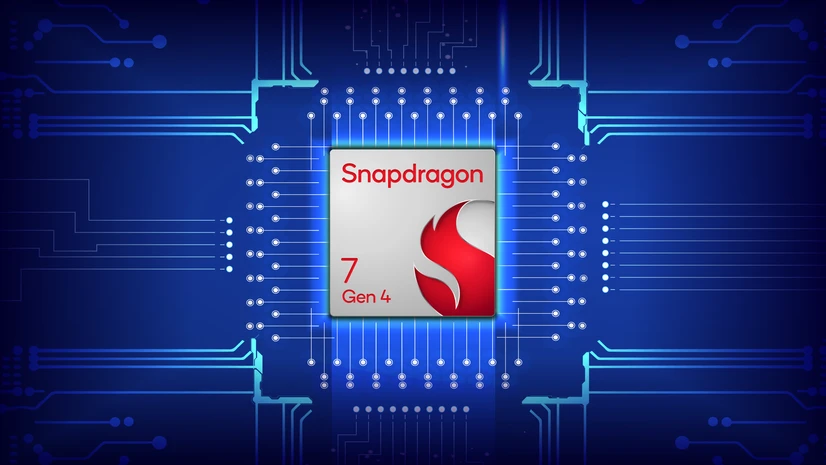Qualcomm has announced the Snapdragon 7s Gen 4, its latest mid-range chipset for Android smartphones. The new processor brings small but useful improvements over last year’s 7s Gen 3, with faster cores, modest GPU gains, and expanded support for displays, imaging, and AI-powered tasks.
The Snapdragon 7s Gen 4 sticks with a familiar 1+3+4 CPU cluster but pushes its Prime Cortex-A720 core to 2.7GHz, about a 7 percent bump in processing speed compared to the previous generation. The Adreno GPU also sees a similar performance gain, while adding support for Qualcomm’s Elite Gaming features, Adaptive Performance Engine 3.0, and Game Super Resolution — tools aimed at smoother frame rates and better visuals in mobile games.
Display support has been upgraded to handle ultra-wide resolutions up to 1,300 × 2,900 pixels at refresh rates of up to 144Hz, giving mid-tier phones access to premium-level screen capabilities. On the camera side, the enhanced Spectra ISP supports sensors up to 200MP and can record 4K HDR video at 30fps, with compatibility for HDR10 and HDR10+ formats.

Artificial intelligence is another focus. The updated Hexagon NPU can run larger AI models, such as Llama 1B, and enables tasks like real-time language translation directly on-device. Connectivity includes sub-6GHz 5G, Wi-Fi 6E, Bluetooth 5.4, and Quick Charge 4+ support.
When compared to its predecessor, the 7s Gen 4 is more of a refinement than a major leap, offering incremental CPU/GPU performance but more noticeable gains in display handling, imaging, and AI functionality. Relative to the standard Snapdragon 7 Gen 4, the differences are nuanced: while the 7 Gen 4 has a Prime core with slightly higher peak clock speeds, the 7s line emphasizes efficiency and advanced AI features, giving device makers flexibility depending on their priorities.
The Snapdragon 7s Gen 4 is expected to appear in mid-range Android smartphones later in 2025, continuing Qualcomm’s effort to balance price, performance, and features in one of its most popular chip families.






